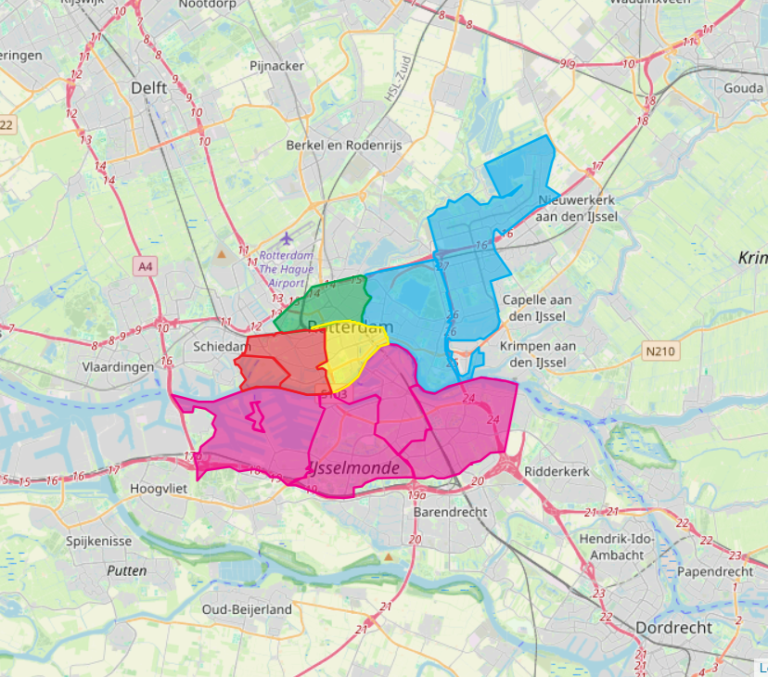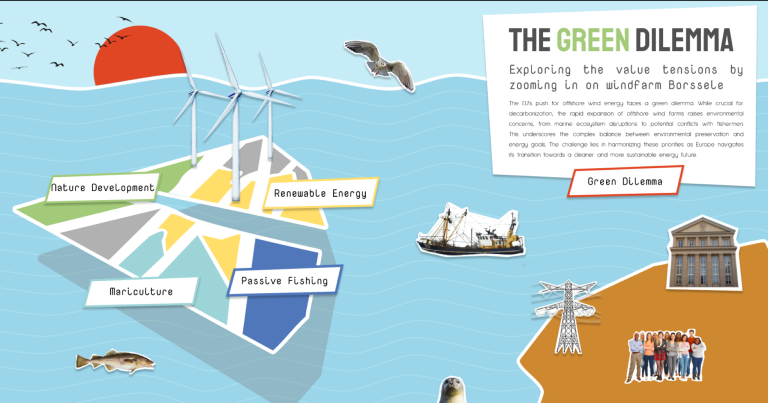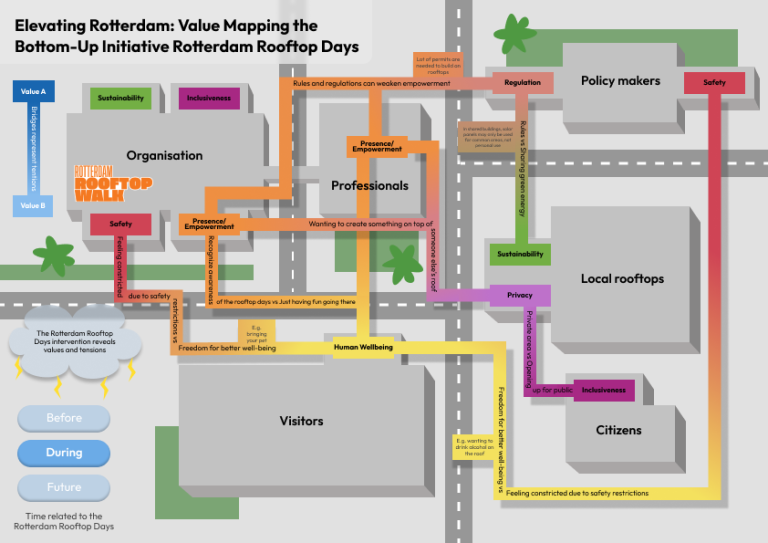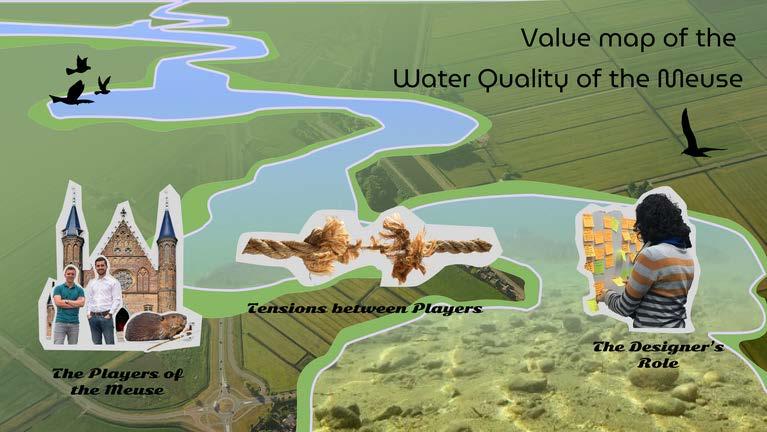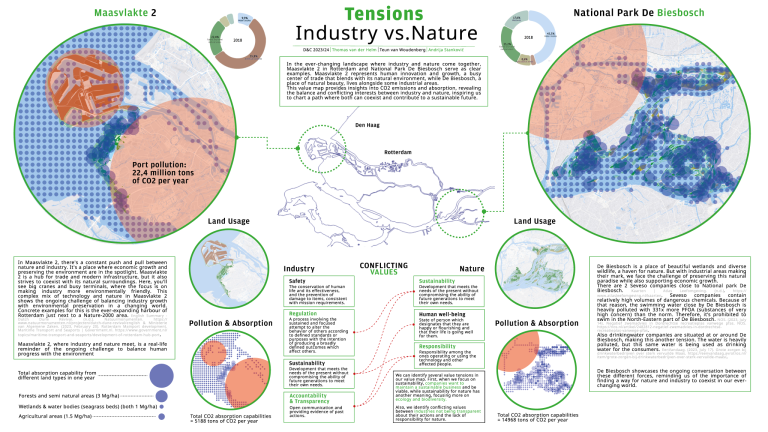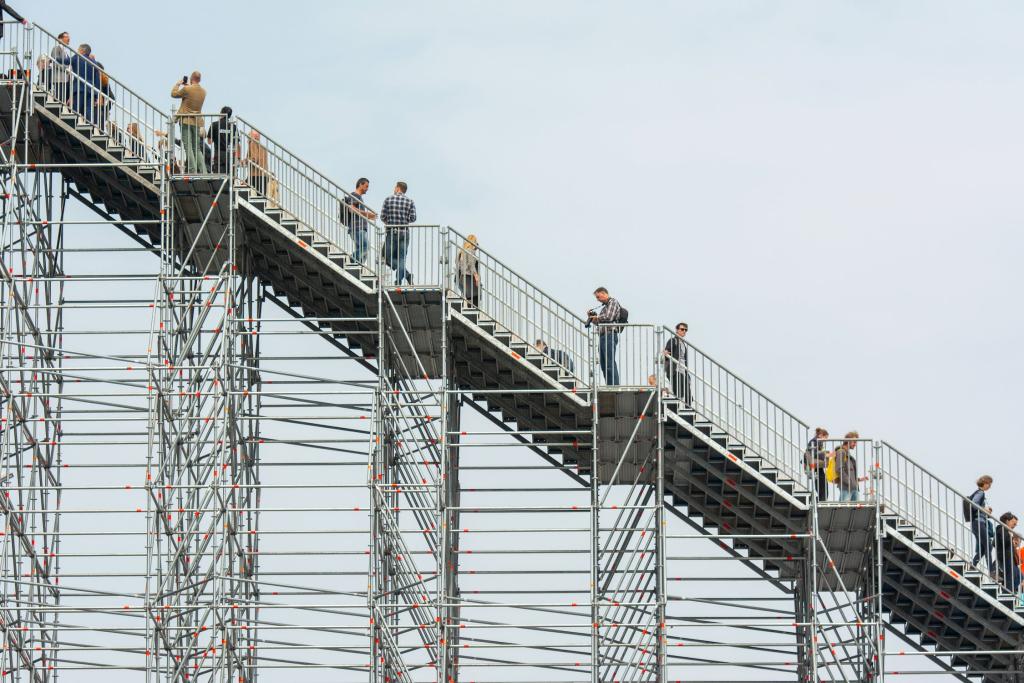
[ID5127] Design and the City
Course Description and Goal (2023)
Over the past years, students in the course ID5127 Design & the City have explored the diverse roles design can play in enabling mission-driven innovation in cities.
Design plays a fundamental role in solving problems present in complex environments such as cities and enables sustainable social innovation. Cities serve as both problem domains and experimental grounds for tackling contemporary societal challenges, including environmental issues and climate change. The ways in which cities are utilized reflect the interests, aspirations, and visions of various stakeholders, essentially representing the values they uphold. However, within the complexity of urban contexts, identifying values and tensions among stakeholders is not always straightforward.
This year the students collaborated closely with the researchers of the Bauhaus of the Seas Sails project. The Bauhaus of Seas is an initial response to the New European Bauhaus challenge; it is a creative and interdisciplinary initiative aiming to reimagine sustainable living in Europe and beyond. Bauhaus of the seas refers to «marhaus» (literally «the sea as our home») or «baumar» («the sea as a space for creation and impact entrepreneurship»).
To walk the talk, Bauhaus of the Sea Sails envisages a continental mobilization across the primary and pivotal global natural domain: the sea. Within the Bauhaus of Seas context, cities close to the water will be offered solutions to achieve climate neutrality while doing design interventions within different regions and aquatic ecosystems: in Portugal (estuary), Italy (lagoon and gulf), Sweden (strait), Germany (river), and the Netherlands/Belgium (delta).
Throughout the course students deliver a Value Map that identifies the ecosystem of actors and communicates the value-driven pathways across multiple dimensions. The produced visual tools enable students to convey acquired insights. The purpose of a Value map is to articulate insights explicitly, revealing the conditions, values, and mindset within the port city.
Please find the resulting Value Maps produced by the students participating in the fall edition of Design & the City.

